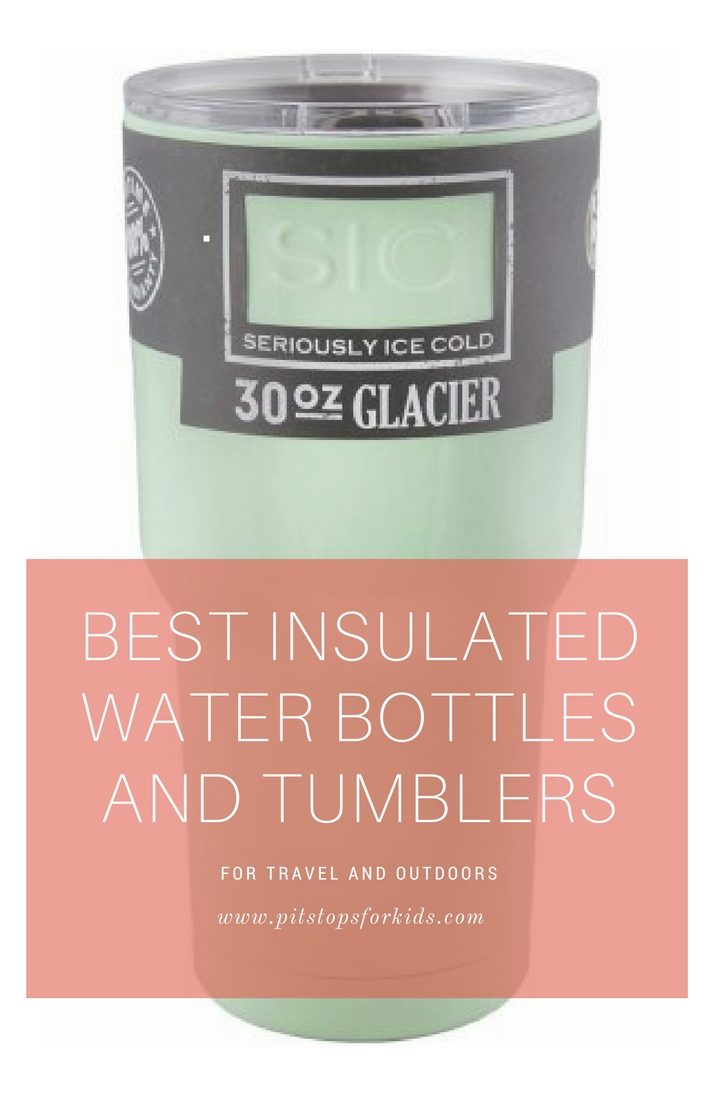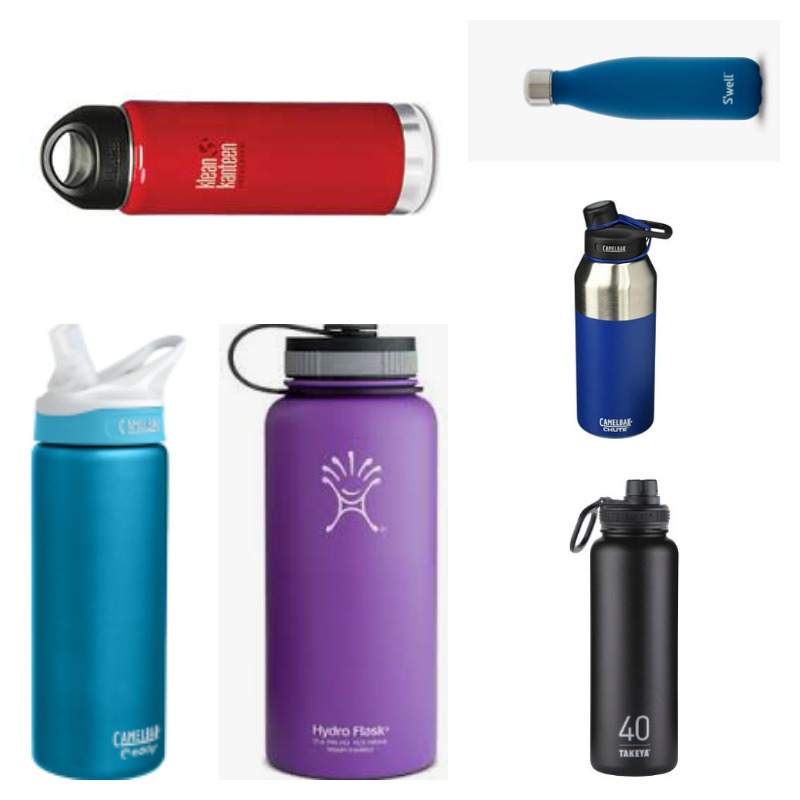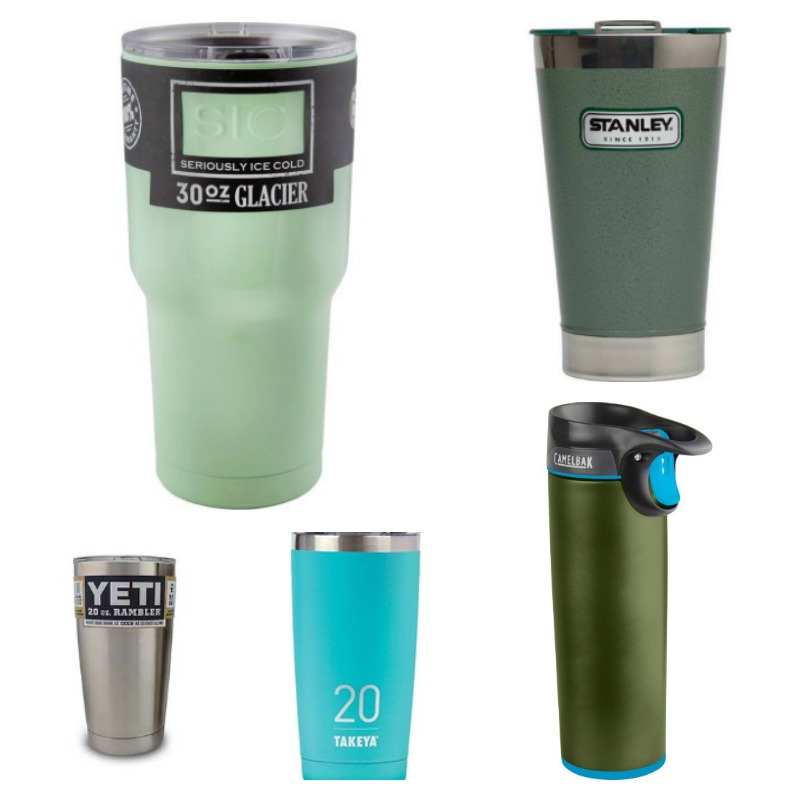At each season’s Outdoor Retailer show (where new products from outdoor and travel brands are showcased and introduced), one or two top travel trends always emerge. This summer, one of those trends was insulated water bottles. It started with HydroFlask, and now, it seems every water bottle company has their own version of a double-walled, vacuum-sealed, stainless steel water bottle. Which to buy for your next travel adventure? We’ll help you sort it out!

Table of Contents
Which insulated water bottle to buy:
In addition to various sized water bottles, insulated water bottles come in various shapes and tend to serve various purposes, so we’ll break it down even further. In each category, I’m including all the brands I personally have used and tested. Are there others? Probably, but in my opinion, the following are the ones worthy of your purchase. All the bottles below are insulated, and all claim at least 12 hours of chill time (up to 24 hours).
Due to various sizes for each bottle, it’s hard to directly price-compare. I’ve linked to the lowest price for each type on Amazon. Affiliate links are present, which help fund Pit Stops for Kids at no added cost to you.
All-purpose insulated water bottles (various sizes):

HydroFlask:
We’ll start with the original, a brand that originates from my home state. I do love HydroFlask and have many bottles cluttering my cabinets. They come in various sizes, from growlers to toddler-sized. For travel days, I like the 21-ounce HydroFlask with standard mouth opening, and my sons prefer the larger bottles with wide-mouth opening for sports and around the house. Where HydroFlask shines: high quality you can trust. Where HydroFlask fails: I have yet to find a HydroFlask lid/opening I like. Sorry, HydroFlask! The straw tops don’t always work, and the wide mouths without toppers can’t control water flow. The flip caps (mostly for hot beverages) is best, but still can leak.
Takeya:
Takeya is a relative newcomer to the insulated water bottle scene, though they’ve been in the water storage game for a while. The Takeya ThermoFlask is similar to the HydroFlask, but in my unscientific opinion, it’s lighter, narrower, and thinner. It’s also a little bit cheaper. Where Takeya shines: the size is ideal for slipping into a backpack side pocket, and the spout lid is awesome: you get a wide-mouth you can unscrew to put ice in, but a smaller opening to drink from. Where Takeya fails: it doesn’t keep drinks cold quite as long as HydroFlask.
Camelbak:
There’s lots to love about Camelbak water bottles, and certainly this brand has come a long way from its days as solely a hydration bladder company. The Camelbak Eddy and Chute have been in our cupboards for a long time in their BPA-free plastic version, and now, like everyone else, Camelbak is making insulated versions. You can get an insulated Chute in 20 ounce or 40 ounce, with the same lid I’ve come to love in the plastic version: like the Takeya, it’s a narrow opening that opens and closes, with a wider opening for ice. You can also now get the Eddy in an insulated version, with the same bite valve as the plastic Eddy. Bite valves can be easier for kids to drink from, but bear in mind that they’re pressurized, so they can leak during car or air travel. Where Camelbak shines: we love that each bottle has a place to clip a carabiner to attach to a raft or backpack…they’re great outdoor bottles. Where Camelbak fails: we would love more sizes.
S’well:
I have fallen for S’well, probably due it its simplistic yet elegant design. S’well bottles come in two sizes (that we know of): 17 ounce and 25 ounce, and you can get a wide variety of unique patterns and colors. If you want to stand out, S’well may be for you. We also like the simple and narrow opening, for ease of drinking. Where S’well shines: the narrow bottles fit nicely in side pockets, and the openings are simplistic. Where S’well fails: there’s no way to attach the bottles to anything, and they’re pretty darn expensive.
Klean Kanteen:
Klean Kanteen has been around a long time, much like HydroFlask, and has solid construction and design on its side. They make plenty of stainless steel bottles, but their insulated ones come in 16 ounce, 20 ounce, and 40 ounce, with a wide mouth. Where Klean Kanteen shines: clean design, solid color stories. Where Klean Kanteen fails: kind of boring.
Insulated bottles especially designed for hot beverages and insulated tumblers:

Camelbak Forge:
The Forge is a personal favorite of mine. What I love: the narrow but tall shape, which I can easily grasp in one hand, and the mouth opening, which features a locked position and a sipping position with a small bowl at the opening where coffee or tea can cool. It comes in 12 ounce or 16 ounce, in lots of sleek, metallic colors. Where Camelbak shines: the design is awesome. Where Camelbak fails: the design is complicated…if the multi-part lid breaks in any way, you’re toast.
Stanley Classic Vacuum Pint:
Yes, it’s a pint glass, not a mug, but I love this Stanley offering so much, and use it for hot beverages so often, it needs to be included. If you want a rugged, classic design and color scheme without frills (and a low price to match), the Stanley vacuum pint is for you. There is a lid, which works quite well to keep liquid hot for longer periods, but it’s not totally enclosed. Stanley also makes a classic vacuum bottle, but I have not tested it. Where Stanley shines: simplistic, classic designs. Where Stanley fails: no updated color stories.
Note: Klean Kanteen and HydroFlask both have sipping lids designed to fit on their wide-mouth bottles to convert any insulated bottle to a hot beverage bottle.
New to the market in recent months are an onslaught of insulated tumblers, designed for commuting and home use. I’ve started to really like these, taking them in the car, to the lake, on picnics, and for day-to-day use at home.
SIC Cups:
Use it for hot or cold beverages, I’m giving SIC a best-in-show here, because it keeps my drinks cold and hot longer than any other brand in this round-up. And it does this as a tumbler, with a plastic lid (vacuum-sealed) lid. They come in 20, 24, and 30 ounce models, and while expensive, SIC is worth it. Where SIC shines: there was ice unmelted in my cup 24 hours after I put it in there. Enough said. Where SIC fails: a SIC cup is expensive.
Takeya ThermoTumbler:
Like the Takeya ThermaFlask, their tumbler is affordable and fits nicely in the hand. Also like the ThermaFlask, it doesn’t keep beverages hot and cold quite as long as its competition. It comes in two sizes, 20 ounce and 30 ounce; the 20 ounce is a really nice size for a standard cup of coffee. Each have a plastic, sealed lid like the SIC cup. Where Takeya shines: the size of the cups are good, and the price is right. Where Takeya fails: just not quite the quality of the SIC. It will come down to budget.
Yeti Rambler tumbler:
We love our Yeti cooler (seriously, if you’re outdoors a lot or road trip often, invest in one), so I was happy to see Yeti come out with an insulated tumbler. The Yeti comes in three sizes; we found the 20 or 30 ounce to be best (the 10 ounce is just too small). It’s very similar to the other two tumblers in this list in design. Where Yeti shines: it’s a name you can trust to keep stuff cold. Where Yeti fails: it’s still not quite as high quality as the SIC, but it IS a bit more affordable.
Pelican SD32 Travel Tumbler:
Pelican’s offering in this category is just as no-nonsense as you’d expect from this rugged brand. We love that that the SD32’s tall, not fat (so it fits in car bottle holders), and it has a copper-plated inner wall. The most unique aspect of the Pelican tumbler, however, is the unique drink lid, which has a slide opening to prevent spillage. Where Pelican shines: this hefty bottle is substantial, and can stand up to lots of wear and tear. It also comes in a 22 ounce version. Where Pelican fails: the colors (silver, black, and green) feel kind of boring.
If you have a favorite insulated water bottle, let us know in the comments!
Subscribe to our Pit Stops for Kids seasonal newsletter, and get an exclusive travel ‘cheat sheet’, free! Click here!





